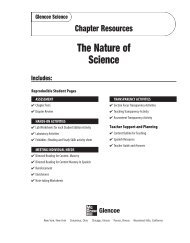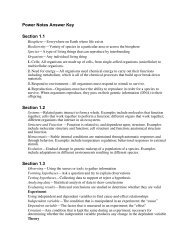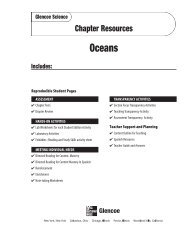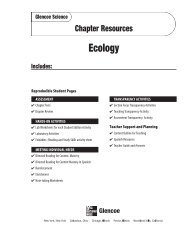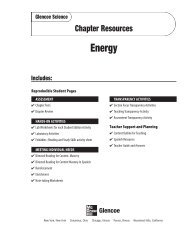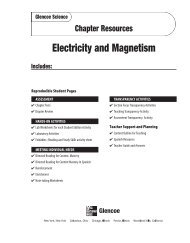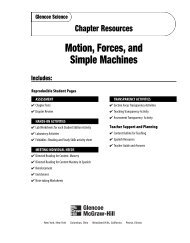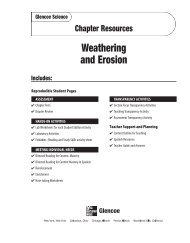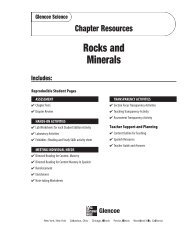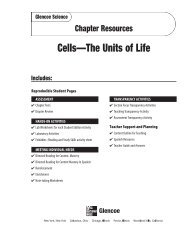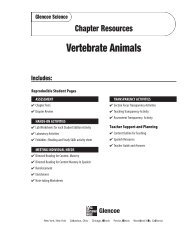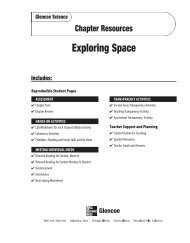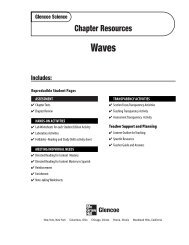Content Outline for Teaching - Potosi School District - Home
Content Outline for Teaching - Potosi School District - Home
Content Outline for Teaching - Potosi School District - Home
Create successful ePaper yourself
Turn your PDF publications into a flip-book with our unique Google optimized e-Paper software.
18<br />
<strong>Content</strong> <strong>Outline</strong><br />
<strong>for</strong> <strong>Teaching</strong><br />
Vertebrate Animals<br />
Underlined words and<br />
phrases are to be filled<br />
in by students on the<br />
Note-taking Worksheet.<br />
Section 1<br />
Chordate animals<br />
A. Chordate—animal with a notochord, a nerve cord, and pharyngeal pouches<br />
sometime during its development<br />
1. Internal system of bones called an endoskeleton<br />
2. Ectotherms—cold-blooded animals whose body temperature changes as their<br />
surrounding temperature changes<br />
3. Endotherms—warm-blooded animals whose body temperature does not<br />
change with changes in their surroundings<br />
B. Fish—ectotherms living in water<br />
1. Gills that exchange carbon dioxide <strong>for</strong> oxygen<br />
2. Fins that help steer, balance, and move<br />
3. Scales that cover and protect skin<br />
C. Three groups of fish<br />
1. Bony—have a skeleton made of bone; 95% of all fish<br />
a. Swim bladder—air sac that helps control swimming depth<br />
b. External fertilization in reproduction<br />
2. Jawless fish—long, tube-like body without scales; a cartilage skeleton; mouth<br />
without a jaw; very few species<br />
3. Cartilaginous fish—cartilage skeletons, movable jaws, rough scales, sharp<br />
teeth, usually predators; sharks in this group<br />
Discussion Question<br />
What do all fish have? Gills; most also have fins and scales<br />
Vertebrate Animals 59




